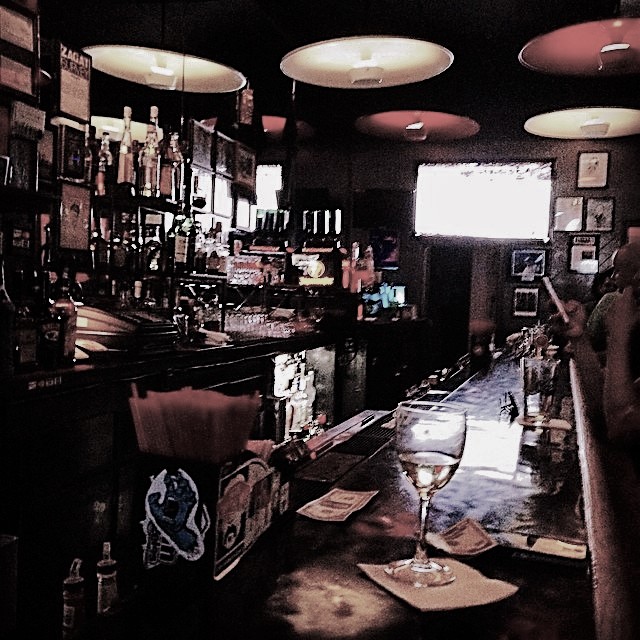

COCKTAILS ARE COOL
By Derek Brown
Derek Brown is a spirits and cocktail expert, consultant, writer, and owner of 2017 Spirited Award winning “Best American Cocktail Bar” Columbia Room, and author of Spirits, Sugar, Water, Bitters: How the Cocktail Conquered the World, published by Rizzoli in April 2019. His work has earned several James Beard Award nominations, and he was named Imbibe magazine’s “Bartender of the Year” in 2015. He is also Chief Spirits Advisor to the National Archives Foundation and a Distinguished Fellow at Catholic University’s Ciocca Center for Principled Entrepreneurship. Brown’s writing on spirits and cocktails has appeared in The Atlantic, The Washington Post, and other publications. In 2019, Washington Post restaurant critic Tom Sietsema named him one of the fifteen trailblazers since 2000 that have made Washington, D.C. a better place to eat (and drink).
When I think about cocktails, I’m often reminded of the famous writers, artists, characters, and actors associated with them. You can close your eyes and picture a man’s man or rebellious woman with drink in hand setting their own path, surrounded by onlookers who marvel at their class and sophistication. James Bond walks up to the bar, tugs on his French cuffs, and orders a Martini shaken, not stirred. Madonna sips on a devilishly red drink in a designer dress with perfectly coiffed hair. Is this what makes a cocktail cool? No, not at all.
James Bond is, honestly, kind of a chauvinist, and Madonna was cool, wasn’t cool, and is/isn’t cool again. There’s nothing cool about the alcoholic writers who were chugging whiskey and gin to an untimely death, and Dean Martin, Frank Sinatra and Sammy Davis Jr. are as much a parody as pioneers. I can’t imagine putting on Frank Sinatra for my son when he grows older and him thinking it’s cool. What was cool fades, subject to the fads of the time. They were just where they were supposed to be and, though live long in our memory, are ultimately dated. Sorry to all the cocktail drinking sophisticates who bought a tux or gown and are awaiting the revival of yesteryear. You may be waiting a long time.
What about the cocktail? It’s blameless. The cocktail didn’t ask to be cool. It shouldn’t go in and out of style like last year’s wide-legged jeans. The cocktail is just what it purports to be—the Martini is a measure of gin and vermouth with orange bitters; the Old Fashioned whiskey, sugar, and aromatic bitters. Perhaps that’s the cocktail’s secret to coolness. It never elected to be cool. It’s just good, and what followed was the recognition. And that recognition followed across time.
The cocktail was cool in 1803 when it was first mentioned in the U.S., listed as a morning hangover remedy in theFarmer’s Cabinet. The cocktail was cool when it was first defined in the the Balance, and Columbian Repository in 1806. The cocktail was cool when Jerry Thomas hoisted two white rats on each shoulder of his prim jacket with a diamond stickpin and twirled his waxy moustache in the 1860s. The cocktail was still cool in Cuba when servicemen discovered the Daiquiri in 1909. The cocktail was not just cool but contraband during prohibition in the roaring ‘20s. It was cool again when prohibition ended and, in the late 1930s, Tiki was born by the hand of faux-Polynesian enthusiasts. When the Mad Men era came along, cocktails were cool too; then again in the 1980s with theatrical bottle flipping known as flair. Obviously they’re cool today, since they made it into this book. In fact, the only time cocktails weren’t cool since their debut might be around the 1970s when it turns out drugs were just considered much cooler.
You get my point? Cocktails have been cool longer than that little black dress, rock ‘n roll, and James Dean combined. What’s purportedly cool for the time and what remains cool throughout time are two different things.
“What’s purportedly cool for the time and what remains cool throughout time are two different things.”
The cocktail has lasted so long on the cool list because its DNA is the perfect foil for experimentation. The original definition of the cocktail, mentioned above, was spirits, sugar, water, and bitters. That magic combination would start life as something resembling the Old Fashioned and end up being vaporized and experienced as a walk-in cloud of breathable cocktail. In between there have been many thousands of variations. Sometimes it was just a tweak, as with the Oaxacan Old Fashioned created by bartender Phil Ward. The standard rye whiskey that most bartenders use for an Old Fashioned is replaced with Tequila and Mezcal, the sugar with agave syrup. Other times, the change was more artful and sought to reinterpret the entire presentation of a cocktail, such as when avant-garde chef Grant Achatz of Alinea created edible balloons to accompany his cocktails.
I expect the cocktail will continue this trajectory. Spacemen will pour powdered Gimlets into their gravity resistant mugs and my son, though he’ll likely eschew crooners, will happily down a digitally enhanced Collins variation while listening to music that grinds my elderly ears.
The secret to being cool all this time wasn’t acting like an asshole and wearing a nice suit. It wasn’t sitting in a low-lit corner and brooding. It wasn’t perfectly styling your hair, singing, dancing, or drinking to excess. Nope, all those things will pass, and rightfully so. The secret to coolness is something the cocktail has mastered, and few others have. The secret is to be good. The secret is to have substance. And to have that substance be transferable, to be something that can change with the times while keeping its core intact. Spirits, sugar, water, bitters—it’s such a simple combination. Some genius invented it over 200 years ago. And, right after I finish this essay, I intend to make myself one.
Ω

